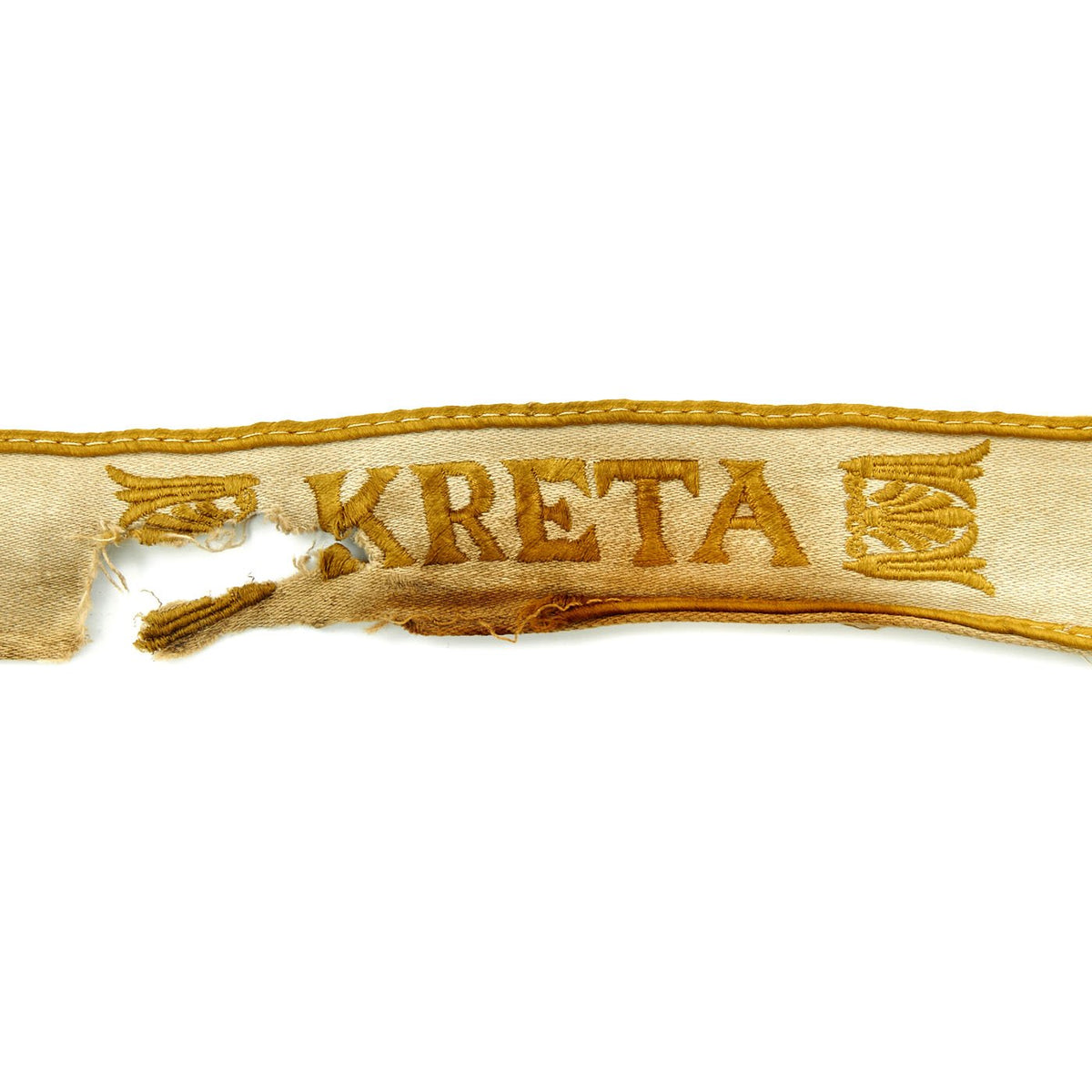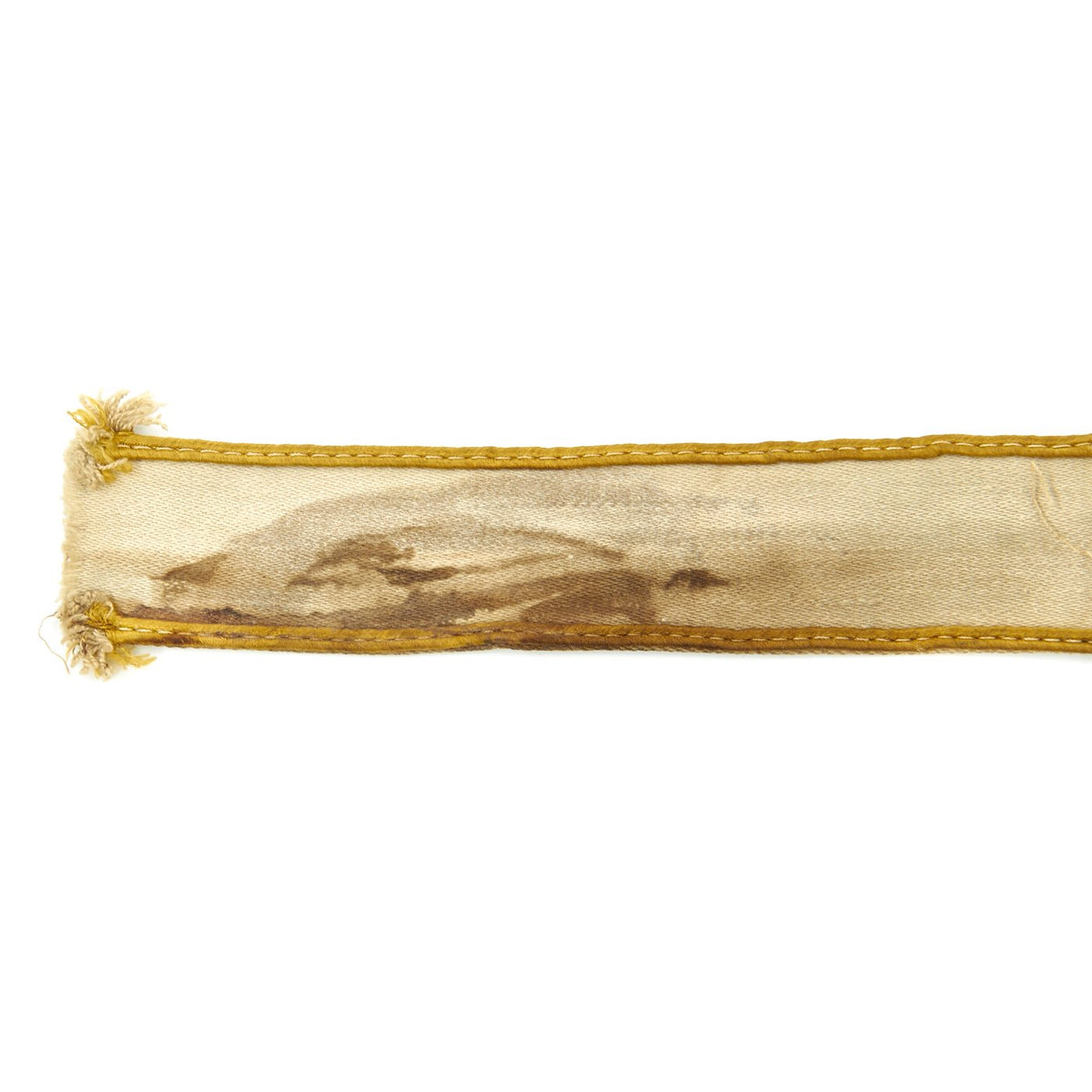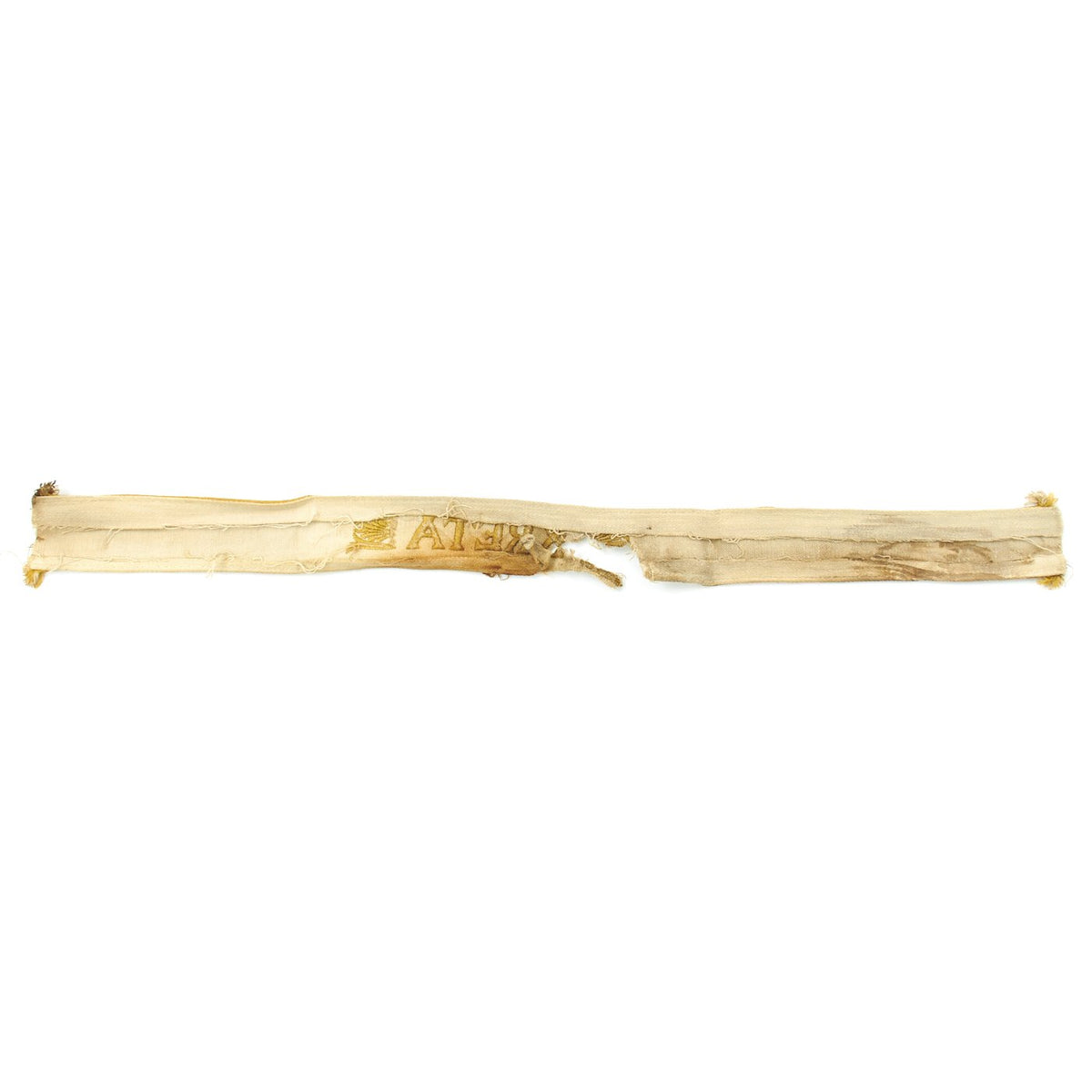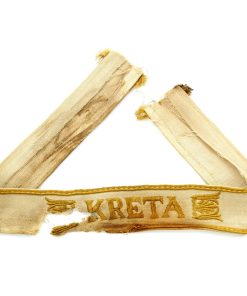Original German WWII Kreta Campaign Cufftitle – Uniform Cut Off Original Items
$ 395,00 $ 118,50
Original Items: Only One Available. This is a nice but well worm and slightly damaged Kreta Campaign Cuff title which was removed from a uniform. It is white cotton construction with machine embroidered Latin script “KRETA” in the center, flanked by acanthus leaves on both sides, the top and bottom edges trimmed in a yellow embroidered border, 1.5″ x 17.5″, interruptions in the fabric on the borders, soiled, torn and battle worn which appears to be a trophy war, most likely cut off in the battlefield.
The Battle of Crete (German: Luftlandeschlacht um Kreta, also Unternehmen Merkur, “Operation Mercury,”) was fought during the Second World War on the Greek island of Crete. It began on the morning of 20 May 1941, when NSDAP Germany began an airborne invasion of Crete. Greek and other Allied forces, along with Cretan civilians, defended the island. After one day of fighting, the Germans had suffered heavy casualties and the Allied troops were confident that they would defeat the invasion. The next day, through communication failures, Allied tactical hesitation and German offensive operations, Maleme Airfield in western Crete fell, enabling the Germans to land reinforcements and overwhelm the defensive positions on the north of the island. Allied forces withdrew to the south coast. More than half were evacuated by the British Royal Navy and the remainder surrendered or joined the Cretan resistance. The defense of Crete evolved into a costly naval engagement; by the end of the campaign the Royal Navy’s eastern Mediterranean strength had been reduced to only two battleships and three cruisers.
The Battle of Crete was the first occasion where Fallschirmjäger (German paratroops) were used en masse, the first mainly airborne invasion in military history, the first time the Allies made significant use of intelligence from decrypted German messages from the Enigma machine,[14][15] and the first time German troops encountered mass resistance from a civilian population.[16] Due to the number of casualties and the belief that airborne forces no longer had the advantage of surprise, Adolf AH became reluctant to authorize further large airborne operations, preferring instead to employ paratroopers as ground troops.[17] In contrast, the Allies were impressed by the potential of paratroopers and started to form airborne-assault and airfield-defence regiments.
Fast Shipping with Professional Packaging
Thanks to our longstanding association with UPS FedEx DHL, and other major international carriers, we are able to provide a range of shipping options. Our warehouse staff is expertly trained and will wrap your products according to our exact and precise specifications. Prior to shipping, your goods will be thoroughly examined and securely secured. We ship to thousands clients each day across multiple countries. This shows how we're dedicated to be the largest retailer on the internet. Warehouses and distribution centres can be located throughout Europe as well as the USA.
Note: Orders with more than one item will be assigned a processing date depending on the item.
Before shipping before shipping, we'll conduct a thorough inspection of the items you have ordered. Today, the majority of orders will be delivered within 48 hours. The delivery time will be between 3-7 days.
Returns
The stock is dynamic and we cannot completely manage it because multiple stakeholders are involved, including our factory and warehouse. So the actual stock may alter at any time. It's possible that you may not receive your order once the order has been made.
Our policy is valid for a period of 30 days. If you don't receive the product within 30 days, we are not able to issue a refund or an exchange.
You can only return an item if it is unused and in the same state as the day you received it. You must have the item in its original packaging.
Related products
Uncategorized
Uncategorized
Band of Brothers ORIGINAL GERMAN WWII Le. F.H. 18 10.5cm ARTILLERY PIECE Original Items
Uncategorized
Armored Burgonet Helmet & Polearm from Scottish Castle Leith Hall Circa 1700 Original Items
Uncategorized
Uncategorized
Uncategorized
Uncategorized
Uncategorized
Uncategorized
Armoured Fighting Vehicles of the World: AFVs of World War One (Hardcover Book) New Made Items
Uncategorized
Uncategorized
Australian WWII Owen MK1 Machine Carbine SMG Custom Fabricated Replica with Sling Original Items
Uncategorized
Uncategorized
Uncategorized
Uncategorized
Uncategorized
Uncategorized












































































